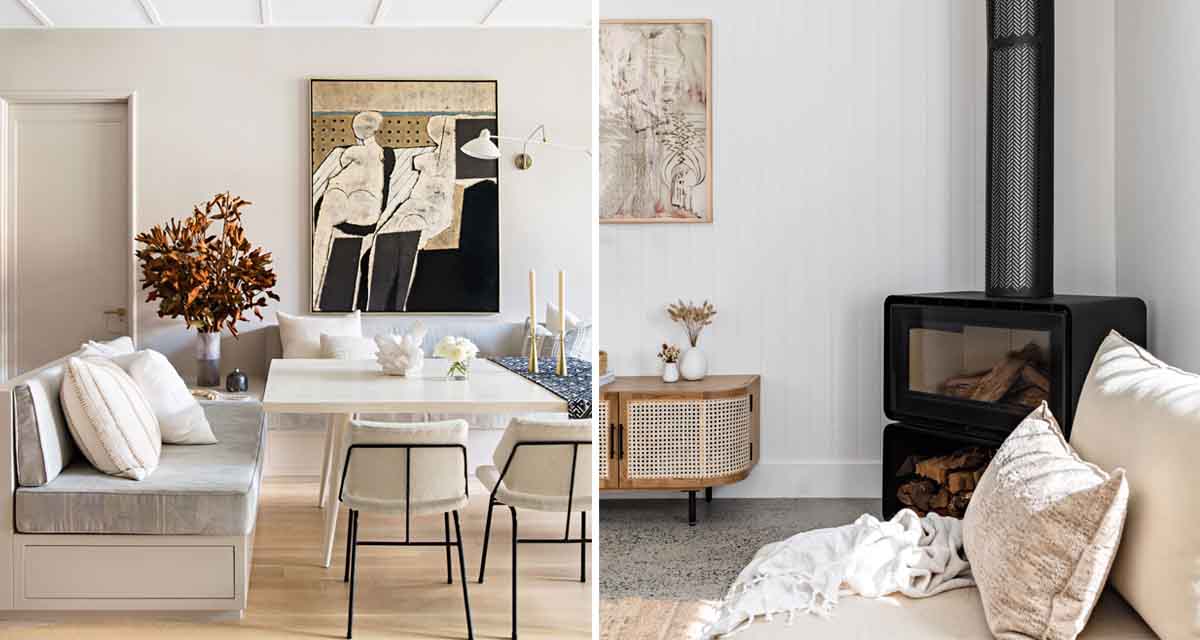LIGHTING
One of the easiest ways to warm up your home for winter is to tweak your lighting arrangement. Not only is the lighting in your home functional and necessary, the use of lighting within your home can drastically increase the cosiness of your surroundings.
The right lighting is key to create a comfortable and welcoming ambiance in your home. Too bright and the space will feel off-putting and harsh, too soft and you’ll find yourself squinting through the darkness.
In most home designs lighting is overlooked and we end up with grid patterns of downlights throughout our homes. While functional for some, this is a missed opportunity to bring interesting details into a room, and also to create a layered lighting setup in your home.
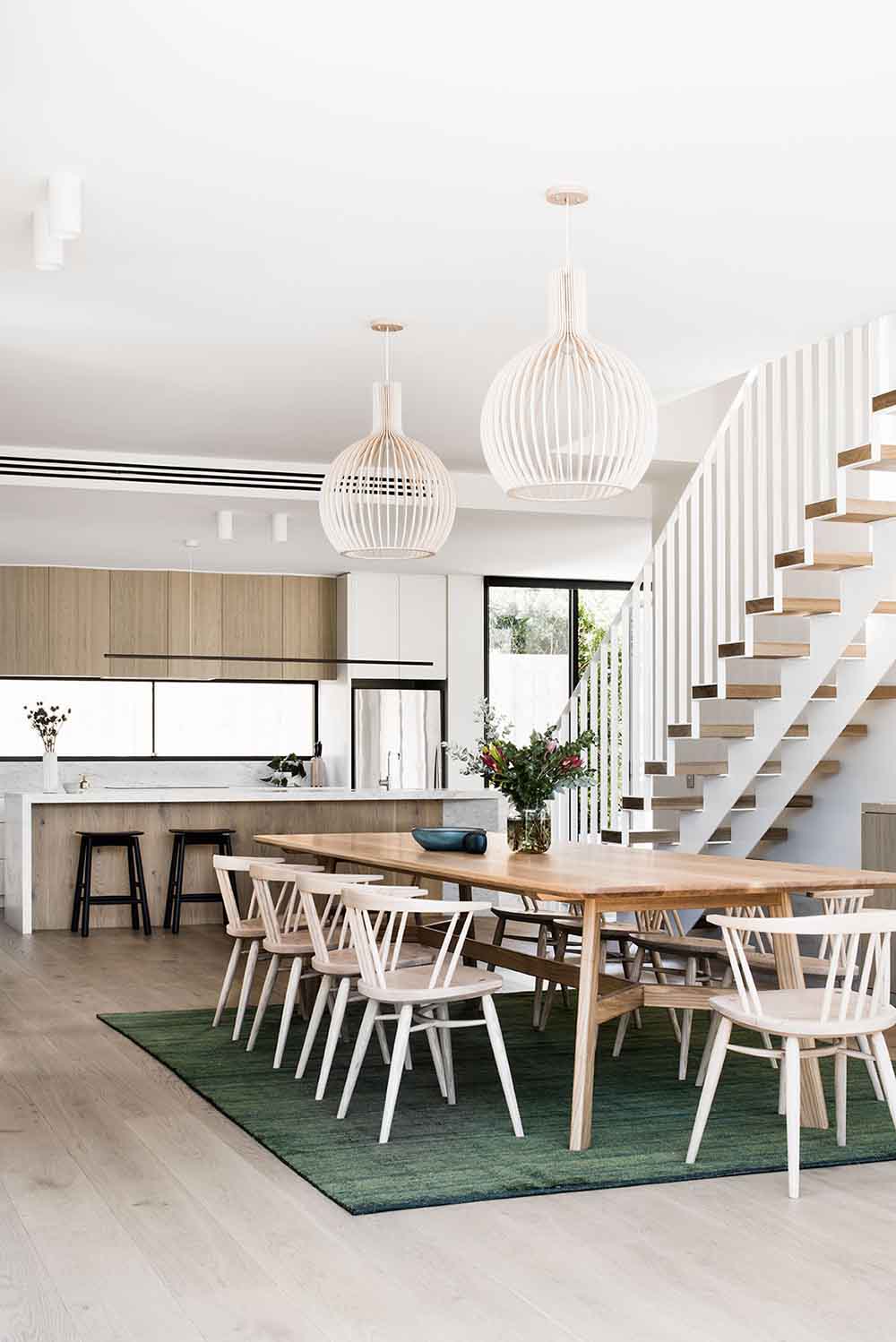 Image Source: Habitus Living
Image Source: Habitus Living
Dimmers Are Your Friend!
Having your lights on dimmers offers you the flexibility to change from brighter, task lighting to ambient lighting – literally with the switch of a button. This is especially important if your home consists only of an arrangement of downlights.
If you are not ready to change up all the switches and bulbs in your home to dimmable options, choose those spaces – such as dining and living areas, bedrooms and circulation spaces – where your needs switch from a well lit, task orientated space to one requiring more ambient and low lighting.
Creating Ambiance
Most homes have some form of downlight to all main areas but by decorating with an opulent feature lamp or floor lamp and using the dim light from this source, you can emphasise the ambience in a particular area.
If you think about the lighting in your home, you can consider downlights as purposeful task lighting. The other lamps, such as wall lamps, pendants, tables and floor lamps, are all lighting layers used to bring ambient lighting to a room.
These lamps are where the real fun begins and offers you the opportunity to personalise and bring character to a space.
While this dining area has large overhead lights and task downlights, there is still a side lamp on hand to create ambient lighting in the space.
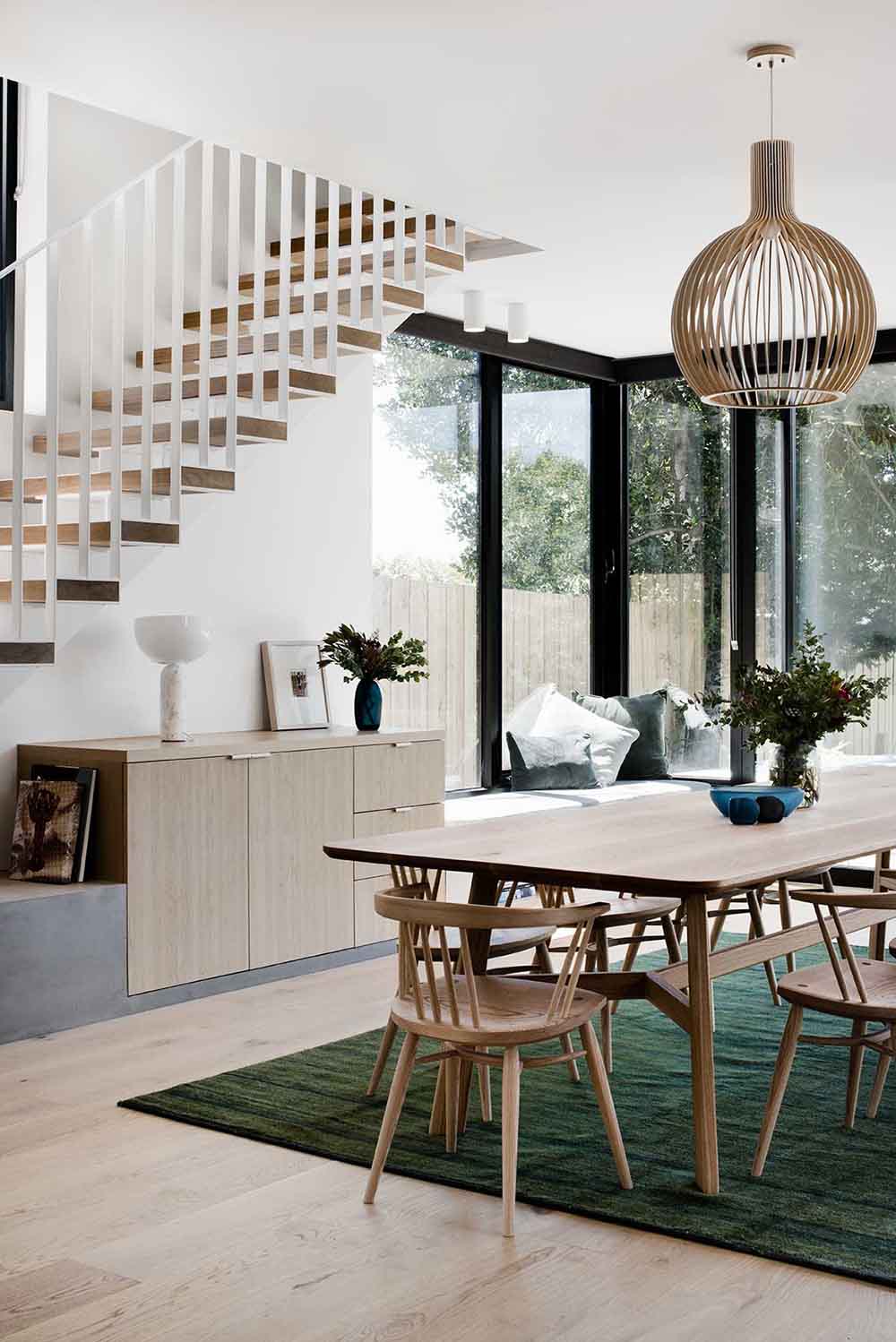 Image Source: Habitus Living
Image Source: Habitus Living
Which Lamp To Choose?
When it comes to selecting your lamp, as you know the options are literally endless, so you need to focus on the function of the lamp in the space, and how much light you need it to bring to the room.
For example, in a dining room you really only need to shed light over the dining table. In this instance you can opt for a pendant light that sheds light at a 180 degree beam spread. However in a living room you typically want the light to bounce right around the room, including off the ceiling and walls, and therefore should opt for a light with a 360 degree beam spread.
Wall lights (up and/or down facing) are excellent for circulation spaces and for background ambient lighting. Table and floor lamps are used best suited for soft, low lighting next to seating spaces.
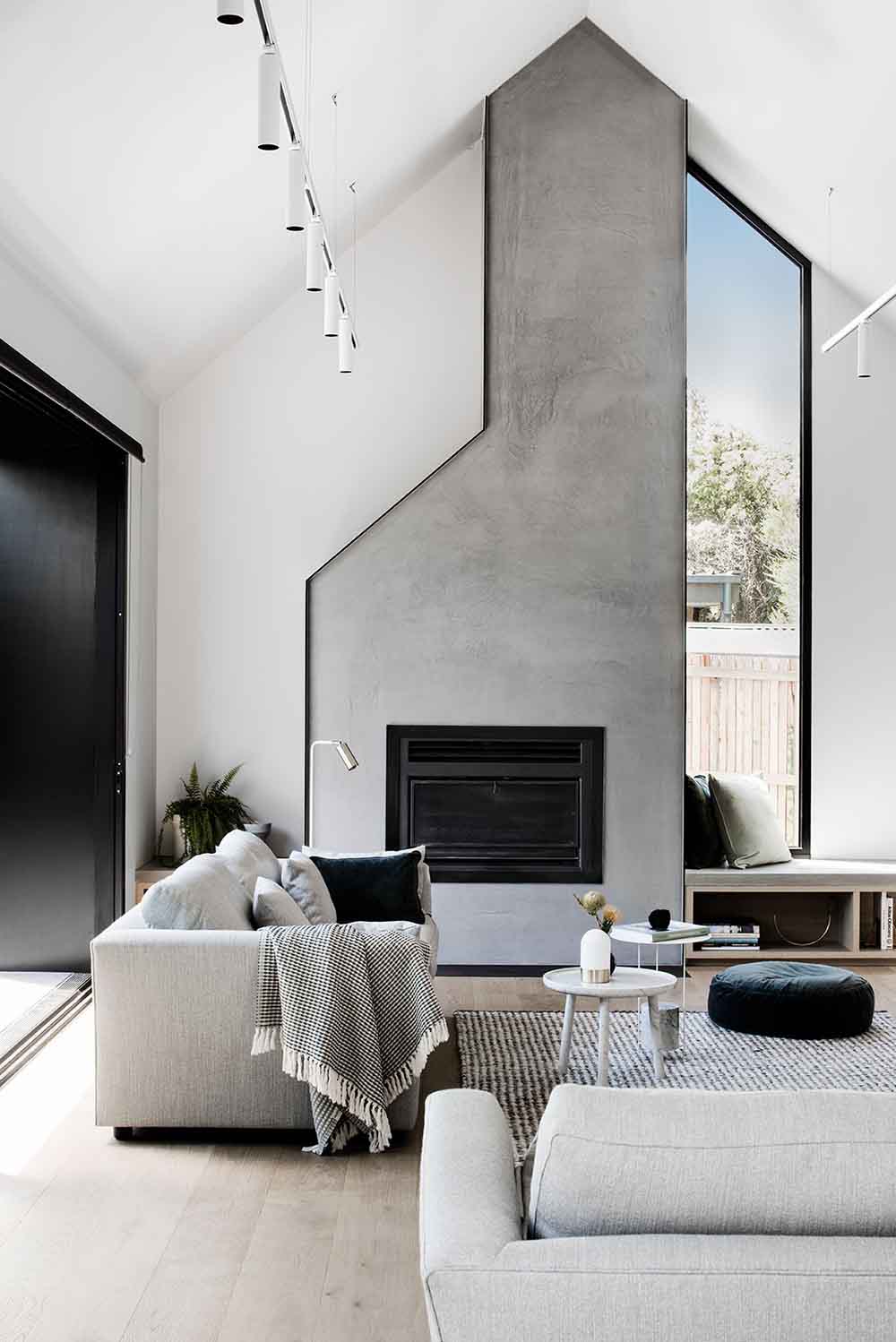 Image Source: Habitus Living
Image Source: Habitus Living
Style and Finishes
Choosing the style and finish of the lamp is very personal – and budget related – choice. However they should definitely be inline with the overall style and finishes of the space as a whole.
Lamps are often considered a good budget friendly way to upgrade a space, and this is espcially true for “task” lighting, such as basic ceiling and wall lamps where a simple upgrade can go a long way to changing the feeling in a room. However, we like to refer to lighting as the jewellery of the room (and not for the bling factor) and investing a little more in a single, statement light can significantly change the aesthetics in a space!
Fabric lampshades are great additions to bedrooms and some living spaces, thanks to the tactile finish they bring to the space. They also do a great job of diffusing the light, for a soft and warm glow.
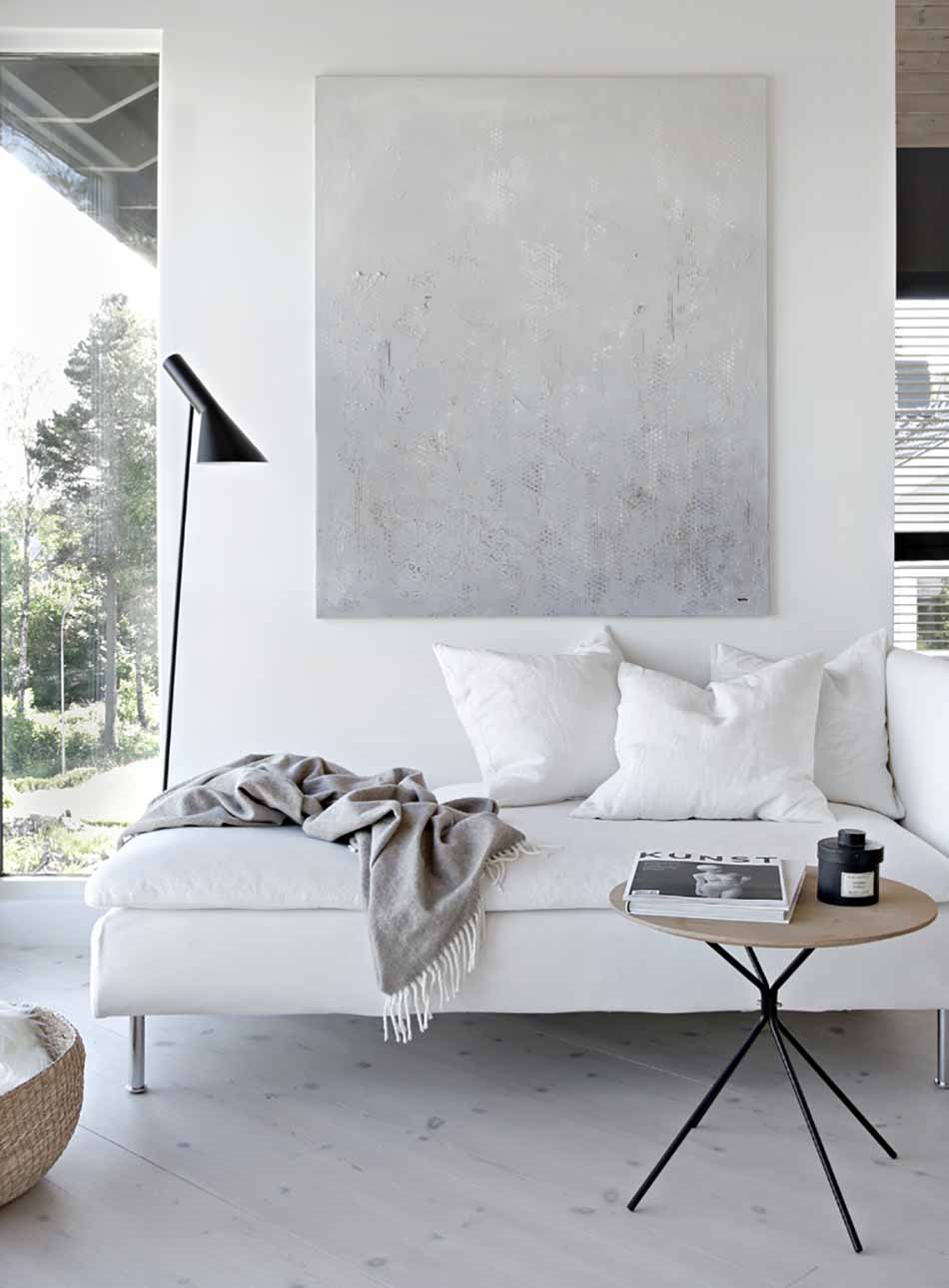 Image Source: Pinterest
Image Source: Pinterest
Where Should The Light Go?
While most people look for the centre point in a room, this is not the only – or best – way to hang a pendant.
First you should consider the layout of the room, looking at furniture placement and which zones within the space need to be lit.
You can then consider if there are any features in a room that you wish to highlight.
Just as you should always swatch test paint colours, it is good practise for you to measure out a light in a room or on a wall, so you can get a sense of the scale and its placement in the room. This applies to the drop height of a ceiling pendant. Use a tape measure to get an understanding of how low the pendant will hang in the room and see if it affects any circulation elements.
Dimmable lamps are great and so are designs with an oversized opal bulb as the main light source. Don’t forget to ask for a warm or natural globe, rather than a stark/cool globe. Below are some table lamps that have caught my eye over the past few month
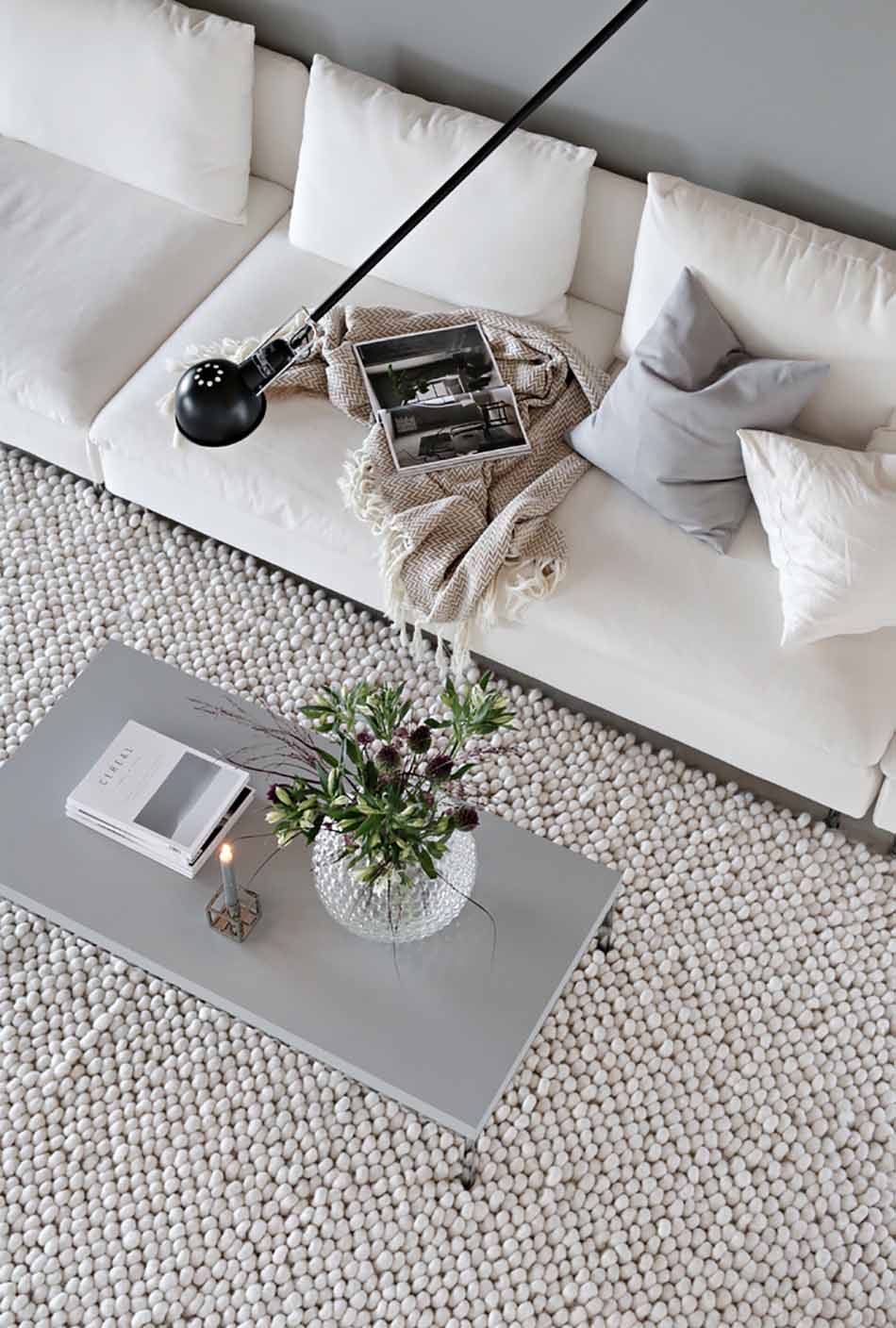 Image Source: Stylizmo Blog
Image Source: Stylizmo Blog
Candles Are Cosy
Candles also create a beautiful, romantic ambience when lit and there are some incredible products on the market, which double as styling decor.
Gone are the days where candles only came in a jar or bowl. Within the past couple of years (and hugely trending now) are candle styles with projection and ribbing, ball and soft shape curves, femme and unique vessel designs, as well as a wide range of colourful wax choices.
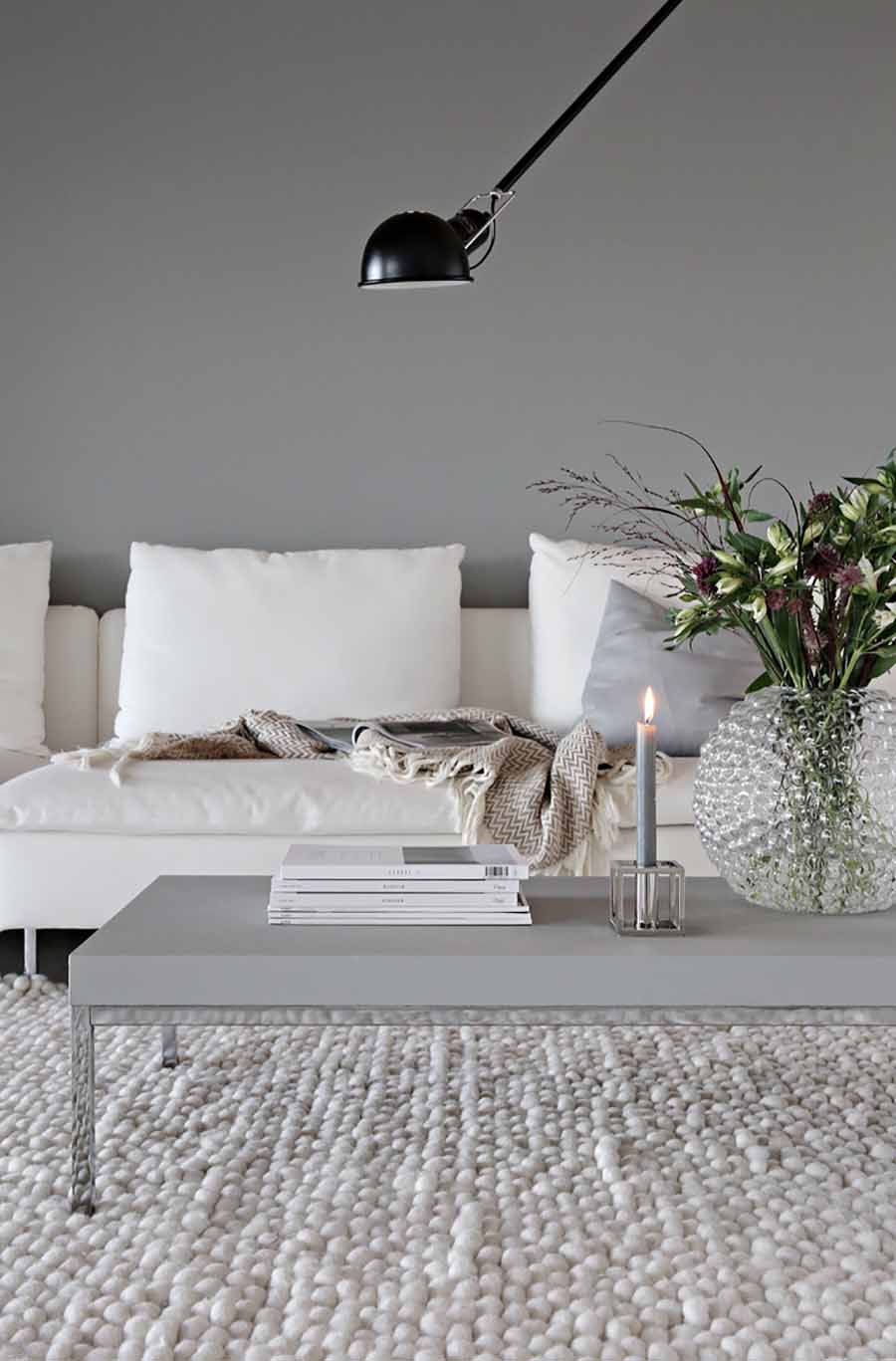 Image Source: Stylizmo Blog
Image Source: Stylizmo Blog
COLOUR
Colour can emphasise whether a space feels warm or cold, especially in winter. Overcast skies and the lack of sunlight will automatically make your home feel darker and duller, but the introduction of warmer tones (and texture) will help make your home feel pleasantly snug.
If you gravitate naturally towards cooler tones like blues, greens, greys etc, and don’t want to change out your decor to a warmer colour, try adding an element of warmth alongside (or layered with) the cooler palette. Creamy neutrals like linen/sand, beige, ivory, caramel, fawn, taupe or tan will work beautifully alongside blues, greens or greys and keep the space feeling cosy.
Don’t feel that you are restricted to the addition of textiles for colour. Colour can be dispersed through the styling of artwork, vases, vessels or candles, furniture, feature paint or even wallpaper.
Plants and flowers are another area you can experiment with colour. This doesn’t mean you need to swap out your greenery, rather it simply suggests you can use it as a point of difference or feature, especially if it helps tie in other blocks of colour around the room
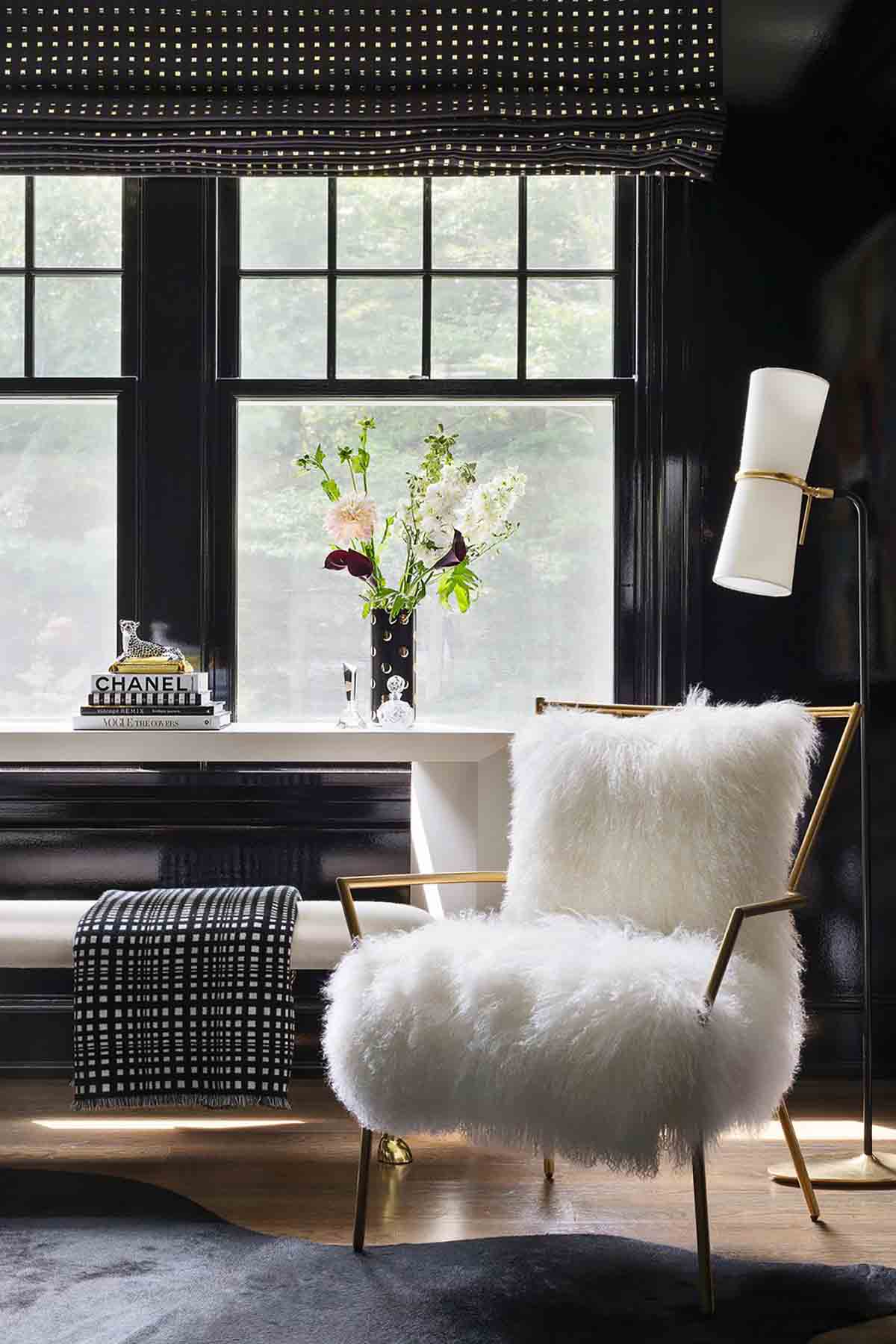 Image Source: Shelby Girard
Image Source: Shelby Girard
WINTER WARMERS
You can also consider these small details for warming up your home this winter
– Invest in plush new bathroom towels and pair them with matching bath mats, for a feeling of luxury to take you through the cold winter months
– If you’re in the market for a new rug, opt for a loop pile wool rug or something with a bit of texture. This makes it soft under foot in water, and versatile throughout summer too.
– Cosy up your bedroom with brushed cotton sheets. The cotton flannelette is ideal for retaining body heat, making them both breathable and soft and/or,m. Ideally for a toast nights sleep.
– Mix up your posters and prints between seasons. Opt for moody and dramatic pieces during winter, over lighter and brighter summer pieces.
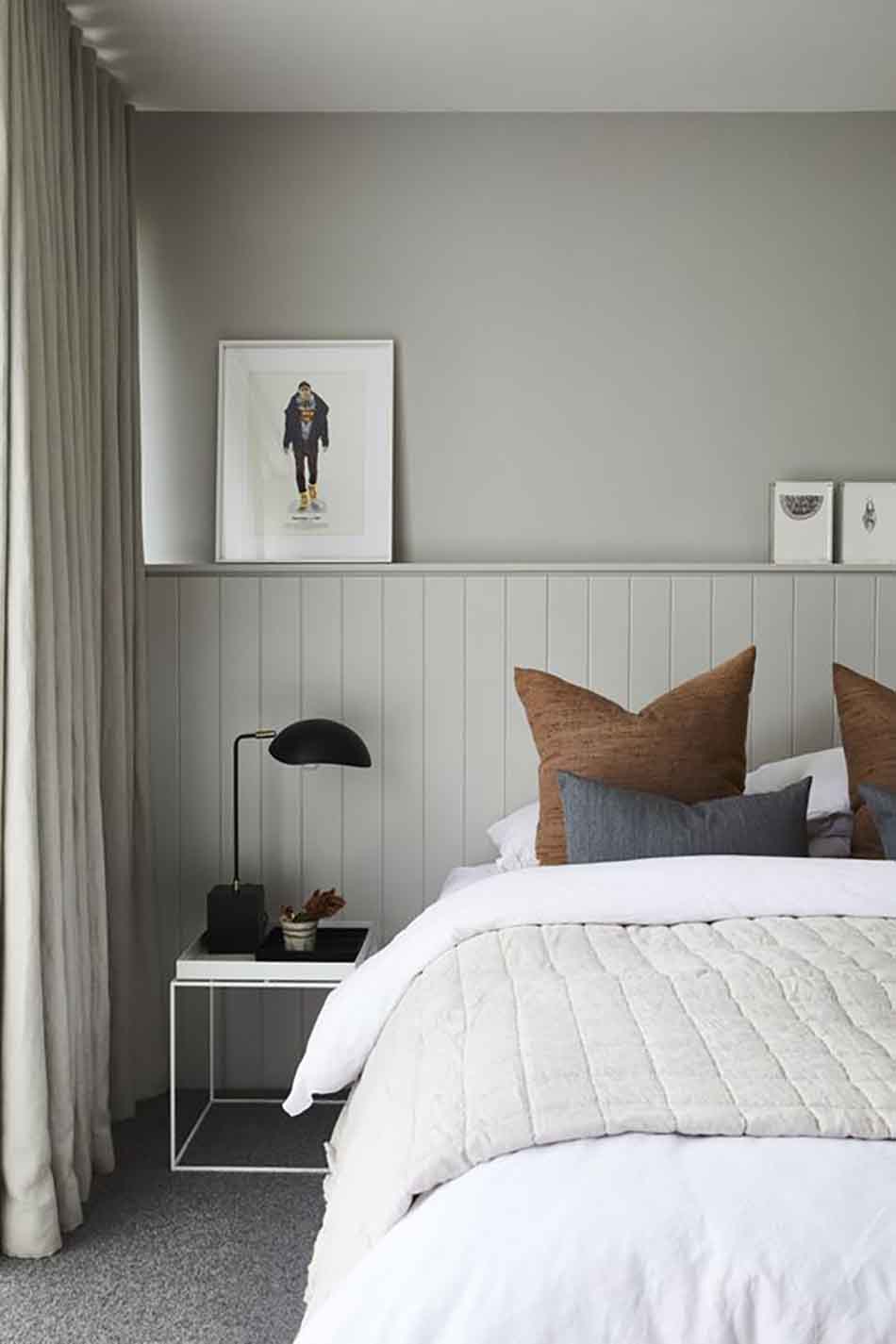 Image Source: Pinterest
Image Source: Pinterest

